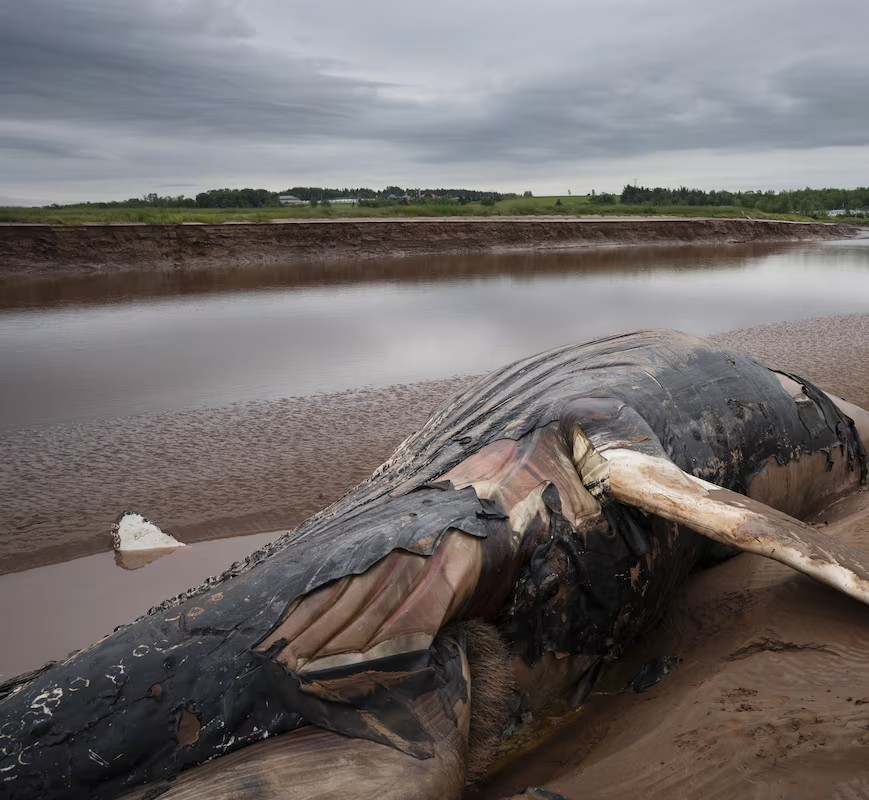On Canada Day, Morgan MacDonald splashed a bucket of seawater over a humpback whale stranded in the middle of Nova Scotia’s Shubenacadie River during low tide. The whale’s grapefruit-sized eyes followed the few people who were trying to keep it cool by covering its barnacled body with wet blankets. Occasionally, the whale would open its long mouth and release a prehistoric-sounding trumpet of air.
As the tide came in—a fast-moving wall of water from the Bay of Fundy—the whale swam into the rising muddy waters, leaving its human rescuers hopeful it would find its way out. Unfortunately, the next day, the whale’s massive body was found lifeless on the river’s muddy banks. Since then, its carcass has drifted through the local rivers, attracting curious onlookers on a busy highway and drawing people to the mudflats at low tide for a smelly close-up.
“Ugh,” exclaimed 10-year-old Emma Speelman of Stratford, Ont., pulling her T-shirt over her nose as she caught her first whiff of the whale, which was oozing liquid on Friday morning. “It’s salty and kind of like something went bad and molded.”
The Bay of Fundy, home to the highest tides in the world, sees water levels rise and fall up to 11 meters at their peak.
All Friday morning, a steady stream of children and adults waded barefoot onto the mud to see the whale until a local man who manages a nearby park warned them to return to shore. Bruce Turner later explained that when the tide turns and water rushes in, the mud can give way and trap a person. “Down you go,” he said, describing the mud’s quicksand-like effect.
The presence of a humpback whale, a common sight in the Bay of Fundy, 35 kilometers up the river, has puzzled many. While it’s not uncommon to see smaller marine mammals such as porpoises and seals in the river, and even a minke whale last month, the appearance of a humpback is unusual. A few years ago, a massive leatherback turtle was rescued from the river by helicopter. The Marine Animal Response Society hoped to solve the mystery by recovering the whale’s remains and performing a necropsy.
For now, the whale is being left to drift and decompose. Nova Scotia’s Department of Natural Resources and Renewables spokesperson Adèle Poirier stated they are aware and monitoring the location of the dead humpback, leaving the matter to the Marine Animal Response Society. Fisheries and Oceans Canada, which assisted in locating the whale with land and air patrols, is also standing down unless further assistance is requested, spokesperson Debbie Buott-Matheson said.



